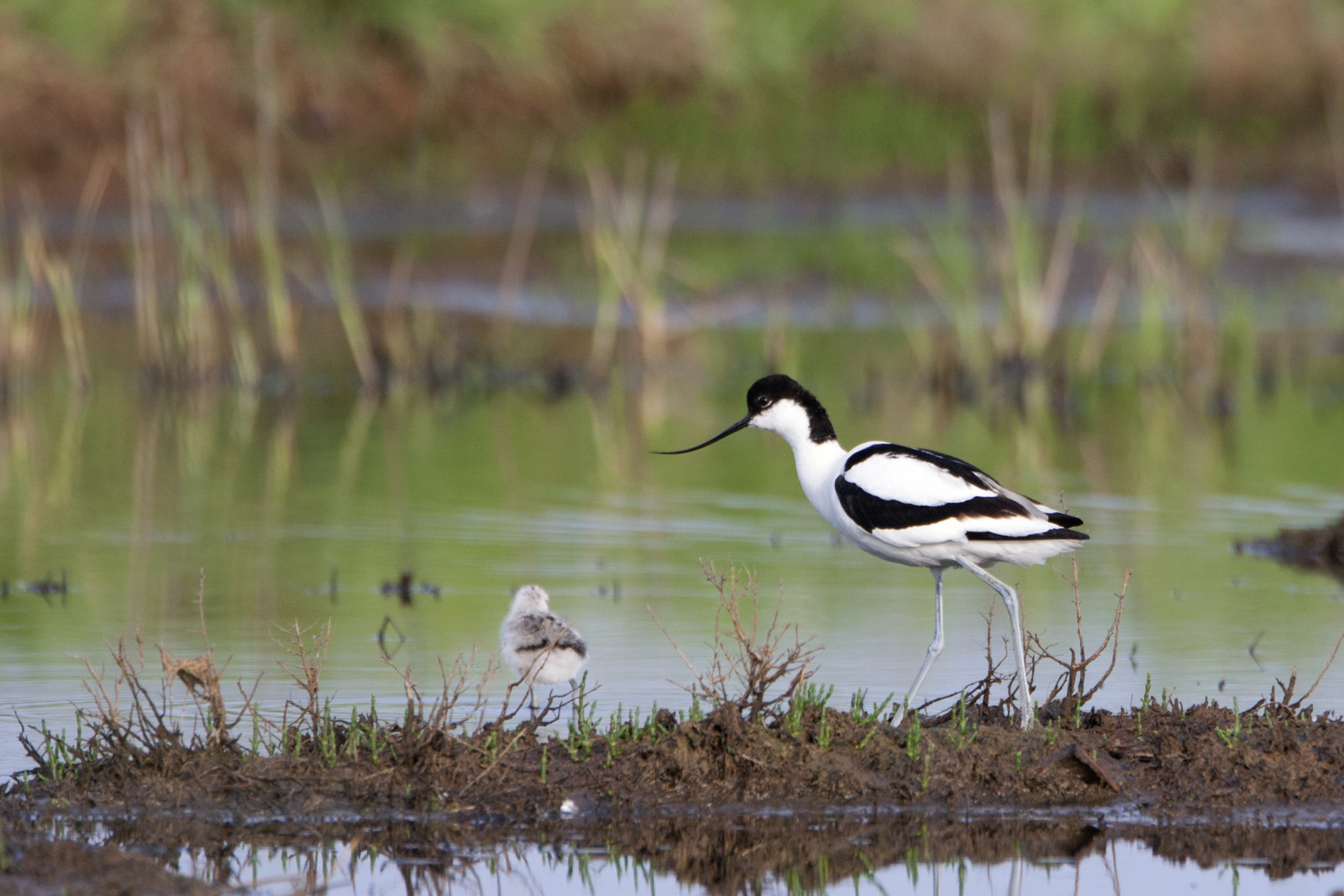Descrizione
Even when the northernmost saline lakes frequently fall dry in summer, the “Unterstinker” is well worth a visit because its water level is higher and means that a different array of species can be expected here.
Dettagli
Accesso
The starting point is a little patch of forest on the north-western shore of the “Oberstinker”, where many passerines rest between mid-April and mid-May. Upupa, Pigliamosche, Canapino maggiore, and Usignolo can regularly be heard here in spring. Following the paved road to the south-east, one reaches a wheelchair-accessible observation platform, which is a great place to scan for waterbirds on the Oberer Stinkersee to the west as well as the Lettengrube to the east. The list of waders recorded here is very long! The Lettengrube has a mud island near the hide, where Avocetta, Corriere piccolo, Combattente, and other waterbirds appear more than happy to pose for nature photographers. The tree frogs on the observation platform and the Gallinella d'acqua and Folaga chicks beneath it are always sure to draw “Aaahs” and “Ohhhs” from the visitors.
The “Oberstinker” is a reliable place to see Avocetta, Fistione turco, Mestolone, and Gavina – in fact it is probably the most reliable place in this area to see the latter two species. The southern shore can be viewed well from the observation tower. This shore is a traditional resting place for various gulls that can sometimes be joined by Sterna maggiore on migration. The Mittlerer Stinkersee is usually a little less rewarding, but Avocetta and Volpoca as well as Marzaiola and Mestolone are regularly observed here as well. The dirt road continues past vineyards and over a slight rise. After about 400 m, a small colony of blue iris (Iris spuria) blossoms at the end of May.
A little later one reaches the northern shore of the Unterer Stinkersee with its many reed passerines. Where the dirt roadmeets the “Lackenradweg” bike path, one is granted a first unobstructed view of the northern part of this lake. Due to the deeper water compared to many of the other lakes, one doesn’t just find dabbling ducks and Folaga here, but also diving ducks such as Moriglione and Fistione turco. It is worth keeping an eye open for neckbands on the Cigno reale that are common here. A number of purple mullein (Verbascum phoeniceum) blossom in the meadows around the observation tower during the first ten days of May. The areas of shallow water in front of the tower are particularly attractive to waders. In spring, one can hear Usignolo, Rigogolo, and Upupa from the west, and can observe Poiana displaying. At the southernmost point of the route, one has a great view of the southern part of the Unterer Stinkersee, which is separated from the rest of the lake at low water levels. A great diversity and abundance of birds can be expected here, provided water levels are high enough: Gabbiano comune, Sterna comune, Cavaliere d'Italiaand Avocetta breed here, while a number of ducks and waders come here to forage for food. Back on the western shore of the “Unterstinker”, turn west for a chance to scan the large paddock for waterbirds. The route continues north between the diverse lakeshore area and the western shore of the “Oberstinker”, back to the starting point.
Terreno e habitat
Zona umida , Prateria/pascolo , Alberi e cespugli sparsi , Steppa , LagoCaratteristiche dell’area
Terreno piano , Paesaggio apertoPercorso ad anello
SiÈ utile un cannocchiale?
Può essere utileBuona stagione per il BW
Tutto l'annoMiglior periodo per visitare
EstatePercorso
Sentiero ampio , Strada sterrata , Strada asfaltataGrado di difficoltà del percorso a piedi
Difficoltà mediaModalità di accesso
A piedi , Bicicletta , MacchinaCapanno/torretta di osservazione
SiInformazioni aggiuntive
There are a number of explanations for the origin of the name “Hölle” (“hell”), which refers to the area between the Oberer Stinkersee in the south, Obere Hölllacke in the north, and Untere Hölllacke in the east. The most plausible is that the Middle High German term “Helja” once referred to the most distant cultivated plots from any village. The “Stinkerseen” (“stinking lakes”) themselves are not the cause of the sulphurous odour that is sometimes perceived in the “Hölle” (depending on the weather). Rather, it is caused by artesian springs around the lakes effusing sulphurous groundwater into the landscape.




